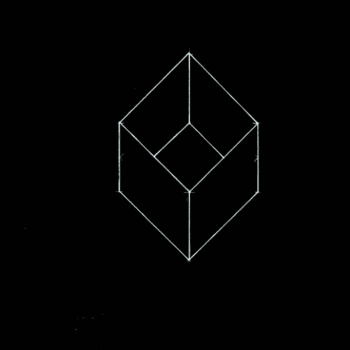Let's isolate yy:
6x+3y > 126x+3y>12
3y > 12 - 6x3y>12−6x
y > (12-6x)/3y>12−6x3
y > 12/3 - (6x)/3y>123−6x3
y > 4 - 2xy>4−2x
Now we have the information we need to graph this:
This looks an awful lot like slope-intercept form, where y = color(orange)(m)x + color(green)(b)y=mx+b with color(orange)(m)m being the slope and color(green)(b)b being the yy-intercept
In our case, we have y > color(orange)(-2)x + color(green)(4)y>−2x+4
This tells us that our graph has a slope of -2/1−21 or down 11, over 11 and a yy-intercept at 44.
graph{y = -2x+4}
Now, we need to figure out if the graph shows a dashed or solid line. This is pretty simple: does the inequality sign include a value (>= or <=)(≥or≤) or does it exclude values (< or ><or>)#? If it includes values, it is a solid line. If it does not, and excludes values, then we use a dashed line.
So in our case, our graph will have a dashed line because it has the >> sign.
The question is, which side of the graph do we include? There are a few ways to check, but I like a simple method: pick two points, one from each side of the graph. THESE POINTS CANNOT BE ON THE GRAPH Whichever one makes the statement true is correct
Let's pick (0, 0)(0,0) and (2, 2)(2,2) No need to make the math hard :)
* * * * * * * * * * * * * * * * * * * * * * * * * * * * * * * *⋅⋅⋅⋅⋅⋅⋅⋅⋅⋅⋅⋅⋅⋅⋅⋅⋅⋅⋅⋅⋅⋅⋅⋅⋅⋅⋅⋅⋅⋅⋅⋅
0 > -2(0) + 40>−2(0)+4
0 > 40>4
is this true? is 00 larger than 44? No it is not, so the inequality isn't on this side
* * * * * * * * * * * * * * * * * * * * * * * * * * * * * * * *⋅⋅⋅⋅⋅⋅⋅⋅⋅⋅⋅⋅⋅⋅⋅⋅⋅⋅⋅⋅⋅⋅⋅⋅⋅⋅⋅⋅⋅⋅⋅⋅
2 > -2(2) + 42>−2(2)+4
2 > -4+42>−4+4
2 > 02>0
is this true? is 22 larger than 00? Yes it is, so the inequality is on this side
![enter image source here]()
*This graph was obtained form https://www.desmos.com/calculator/sqb3smcrdv*

